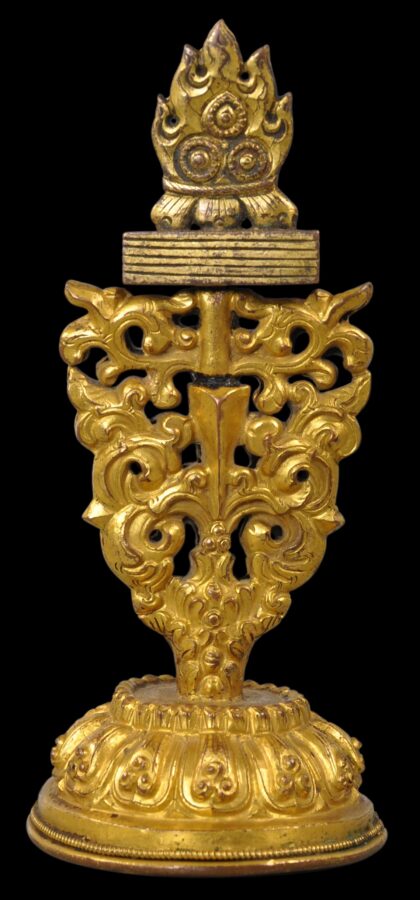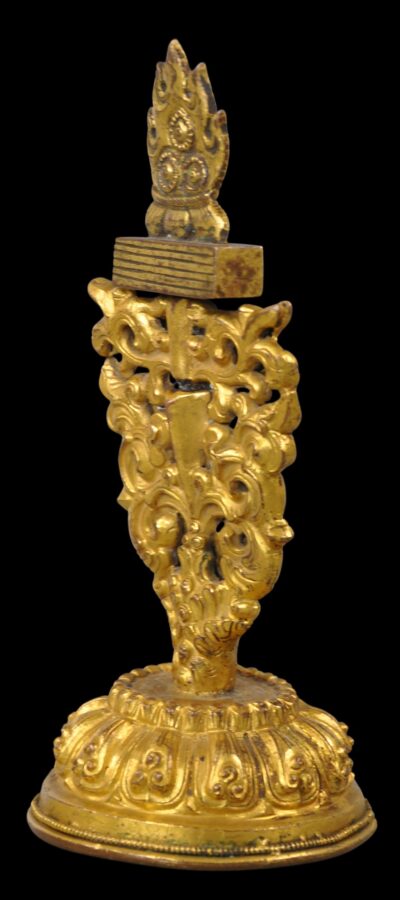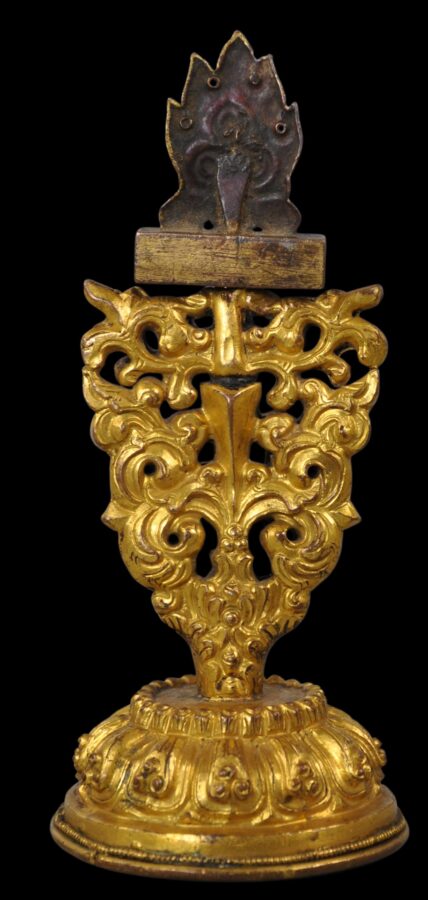Enquiry about object: 9941
Tibetan Gilded Altar Triratna Ornament
Tibet 17th-18th century
height: 13.5cm, diameter of base: 6.1cm, weight: 113g
Provenance
UK art market
This item of gilded copper was designed to adorn an altar. It comprises an elegant flared base decorated with lotus petals, a stemmed body of pierced scrolling leaf motifs, and a top which comprises the three flaming jewels (triratna) arranged in an arched mandorla, resting on a rectangular base designed as a sutra manuscript to signify learning.
The three jewels represent the Buddha, the Dharma (the Buddha’s teachings), and the Sangha (the community of monks and devotees). The flames that rise from the jewels symbolise the light that the jewels shine on the world.
The main part of the ornament has been cast so that it leans forward slightly. This suggests that it was intended for an altar slightly higher than eye level (perhaps when the devotees were seated on the floor) so that it would appear more upright at that level.
Often such ornaments were parts of larger sets such as the Six Offerings for Senses or the Buddhist Eight Auspicious Emblems but this example, topped with the triratna might have been a standalone piece or part of a set. Such an ornament was a decorative emblem for an altar in a temple rather than an active ritual item.
The item is in fine condition.
References
Gong, L., Nanjing Museum, London Editions, 2013.
Henss, M., Buddhist Ritual Art of Tibet: A Handbook on Ceremonial Objects and Ritual Furnishings in the Tibetan Temple, Arnoldsche, 2020.
Lipton, B., & N.D. Ragnubs, Treasures of Tibetan Art: Collections of the Jacques Marchais Museum of Tibetan Art, Oxford University Press, 1996.




